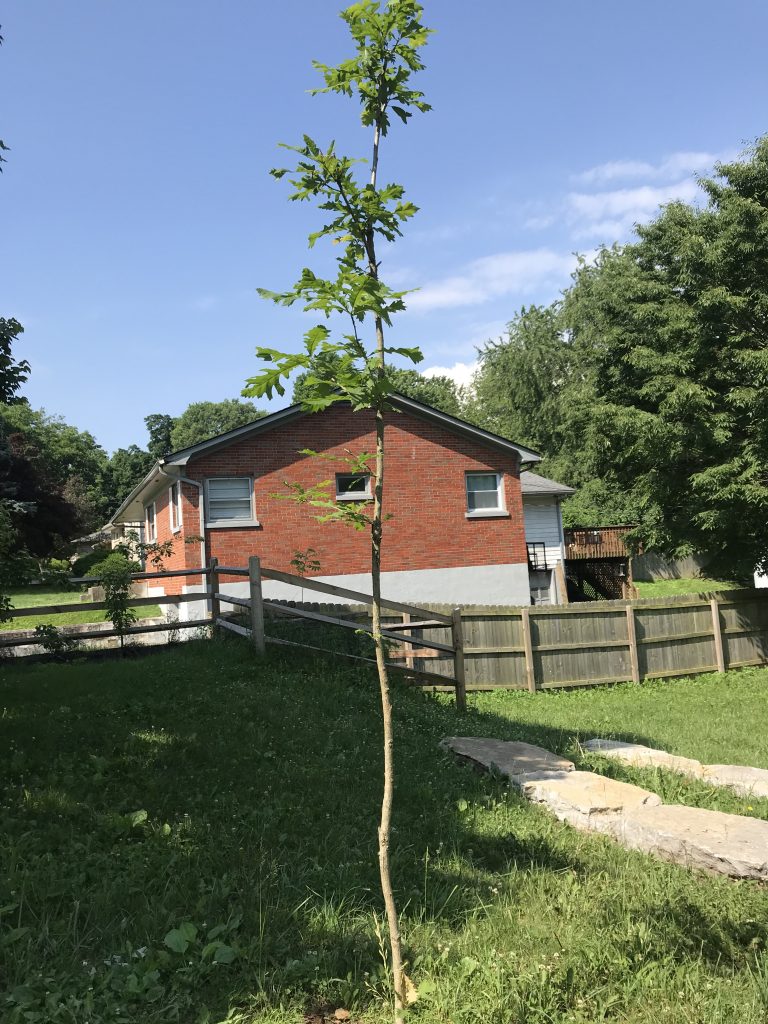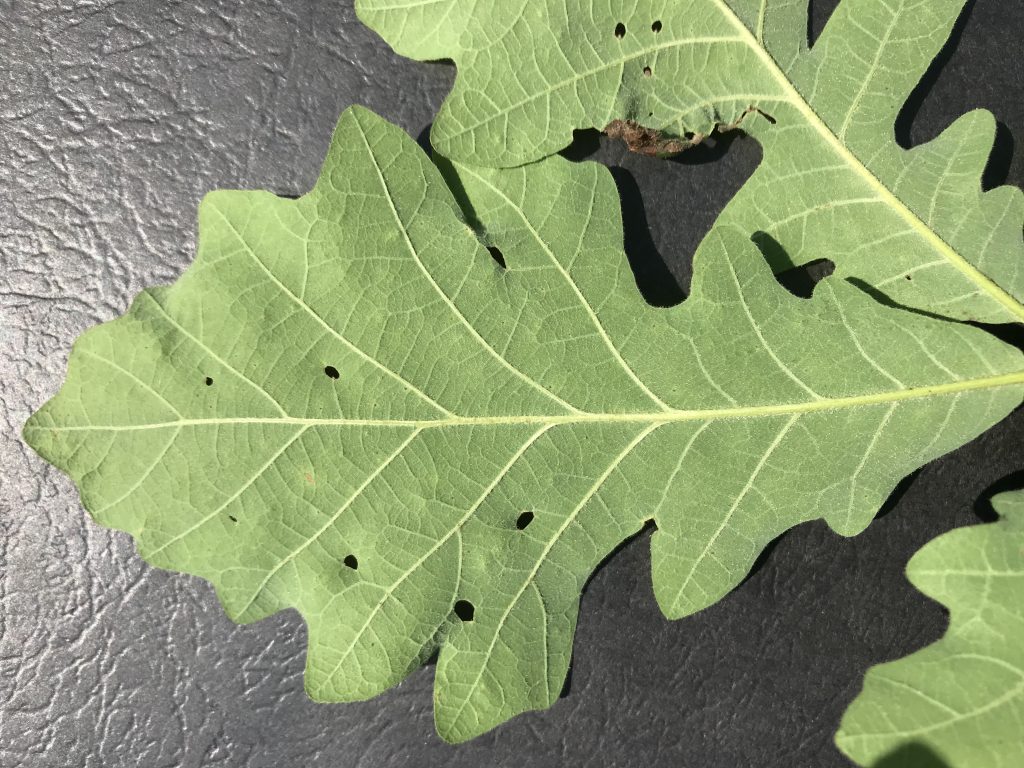Below are pictures of several oak trees who’s species was in question.
We sought the opinion of several botanical authorities on the Genus and Species of these trees. Images and cuttings were circulated.
They can be seen on public property at 512 Southbend Drive and 566 Lone Oak Drive in Lexington, KY.
Here is a summary of comments received.
Click on images for full resolution view.
Sample 01, 566 Lone Oak Drive, Lexington, KY
Kevin Conrad comments:
Julian Campbell: comments: they are bur oak but distinct from Kentucky native trees.
Sample 02 512 Southbend Drive, Lexington KY, Front of lot.
Kevin Conrad, National Arboretum/USDA Comments:
Samples 2, 3 and 4 look like Q. macrocarpa.” could be Q. macrocarpa or a hybrid of Q. macrocarpa. If it really is a hybrid, then Q. lyrata x macrocarpa might be the most likely parentage. Quercus macrocarpa is so variable, though, I wouldn’t call it a hybrid from this photo of juvenile leaf material. I think Q. macrocarpa is the most likely determination
Julian Campbell: comments:
they are bur oak but distinct from Kentucky native trees.
From Ron Jones author of Plant Life of KY:
Most look like bur, but some vary toward bicolor; these do cross. Some mature trees off Duncannon look like perfect hybrids of the two
Also. Twigs would help as buds more acute in bur and twigs more corky
From Ross Clark Author of Atlas of Woody Plants of Kentucky
My opinion is that sample 01 = Quercus macrocarpa;
sample 02 = Quercus bicolor;
sample 03 = Quercus alba;
sample 04 = Quercus bicolor. Q. bicolor is sometimes difficult to tell from Q. macrocarpa without fruit, but the bark of those two is a definitive character for separating them in the field, even when the trees are young.
Brad Ruhfel, Eastern KY University Herbarium.
Without seeing the acorns and buds, it is difficult to be definitive, but I think they are all the same species, bur oak or Quercus macrocarpa (Fagaceae).
Emily Ellingson, UK Arboretum
Sample 01: Keyed out to chestnut oak, Quercus montana, although doesn’t totally fit the bill
Sample 02: Swamp white oak, Q. bicolor, possibly a hybrid btwn. Q. bicolor x Q. macrocarpa
Sample 03: Bur oak, Q. macrocarpa
Sample 04: Bur oak, Q. macrocarpa, possible hybrid
Wouldn’t it be easier if there were acorns? Hah!
Stacy Bordon: UK Arborist
These look like Swamp White Oak and Bur Oak and maybe a combination of both.
Rob Paratley, University of Kentucky Department of Forestry
Sample 1 looks like an oak hybrid- one of the parents is chinkapin oak Quercus muhlenbergii. Numerous shallow lobes that are glad-tipped, but more pronounced than pure chinkapin oak. Other parent could be white oak Quercus alba. Not sure.
Sample 2 is bur oak Quercus macrocarpa. May have another species’ genes in it, but predominantly bur oak. Twigs hairy- swamp white oak has smooth twigs.
Sample 3- is bur oak Quercus macrocarpa. Pure & simple.
Sample 4- is also bur oak Quercus macrocarpa. May have another species’ genes in it, but predominantly bur oak. Twigs hairy. Leaves small for bur oak, but have characteristic deep middle sinus.
Sample 03 Lexington, KY
Sample 04, 512 Southbend Rear of lot.
















